Only $99 for a full year!
No credit card required
Rank on Google's first page in 3 months
SaaS SEO Strategy: A 9-Step Process to Drive Growth
Jul 03, 2023 | user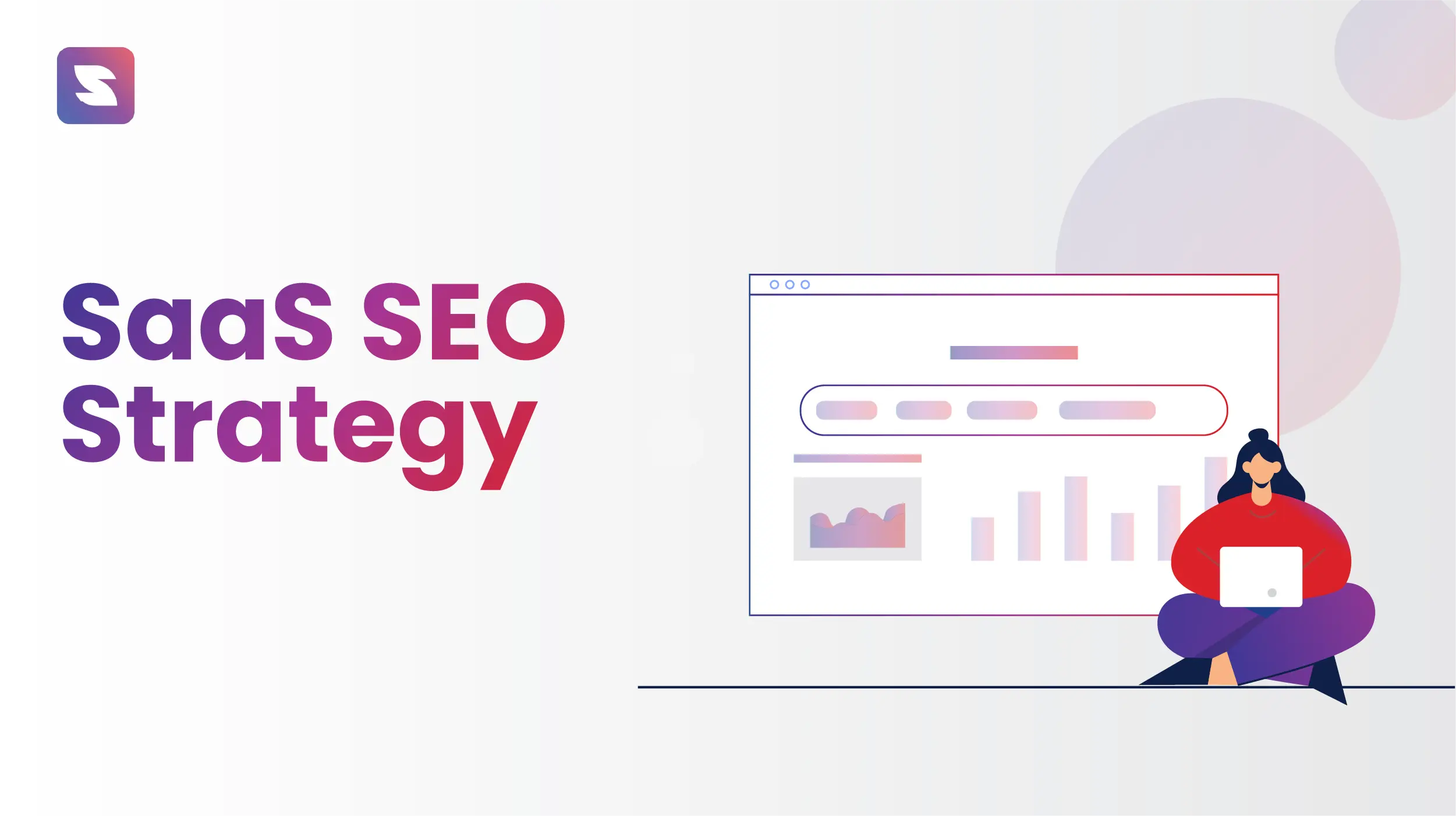
SEO is all about optimizing your website so that a search engine – like Google – shows it as a top result when someone searches for a particular keyword.
But why is this special for SaaS companies?
SaaS companies are often dealing with a pretty niche market. They usually have a specific target audience they’re trying to reach – people who need their particular software service. For instance, if a company offers project management software, their target audience could be project managers, teams, or businesses that handle many projects.
So the SEO strategy to put in place has to be tailored accordingly. And that’s what we are going to help you with this blog. We will discuss the importance of having a proper Saas SEO strategy and the steps to build it, with examples.
Let’s discuss these in detail.
What is Saas SEO?
As the name indicates, it implicates the focused SEO for SaaS companies. The end goal here can be anything from driving more organic traffic to generating sign-ups or leads.
A big part of SaaS SEO involves optimizing the website’s content. It must be designed to make it appealing and easy to understand for humans and search engine algorithms. This could mean using relevant keywords, creating informative and engaging content, and ensuring the site’s structure is easily navigable.
For example, if you run a SaaS company that offers project management tools, you’d want to target keywords related to that. This can be “best project management software” or “project management tools for small businesses.”
Once you have finalized the focus keyword, it’s time to create high-quality content. Just keep in mind to provide value to your potential customers and help them solve their problems. Keep track of the content and other key SEO KPIs to analyze your progress.
We will discuss such SaaS SEO strategies further down the lane. Now let’s see why it is crucial to have a solid SEO strategy for your SaaS business.
Why is having a solid SEO strategy important for SaaS Companies?
Let’s consider the previous example. Say you have a SaaS product that offers project management solutions. If your SEO strategy is solid, when businesses search for “best project management software,” your product has a good chance of appearing in the top results. This visibility can significantly improve your chances of attracting and retaining customers.
To give you a better idea of having a solid SEO strategy for your SaaS company, take a look at the following reasons:
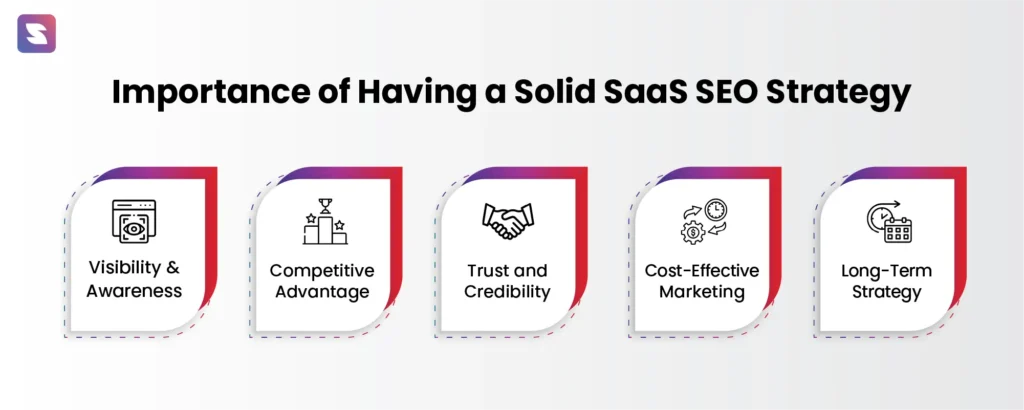
Visibility & Awareness
When prospective customers are looking for a solution to their problem, they often start with a search engine. A good SEO strategy ensures your SaaS product appears in these search results, increasing visibility and brand awareness.
Competitive Advantage
The SaaS market is extremely competitive. By ranking high on search engine results pages (SERPs), your business can stand out from competitors and increase the chances of winning new customers.
Trust and Credibility
Customers tend to trust companies that rank higher on SERPs. Strong SEO can help you establish this authority, boosting the credibility of your SaaS company.
Cost-Effective Marketing
SEO is a form of inbound marketing, meaning customers find you when they are actively looking for information or solutions. This makes SEO more cost-effective than outbound methods like cold calling or mass emailing.
Long-Term Strategy
SEO is a long-term strategy, unlike paid advertisements that stop generating traffic as soon as you stop paying. A well-ranked site can continue to attract traffic for years.
Now that you have understood the importance of a solid SaaS SEO strategy, let’s see how you can build one.
A Quick Overview of the 9 Steps to Build a Perfect SaaS SEO Strategy
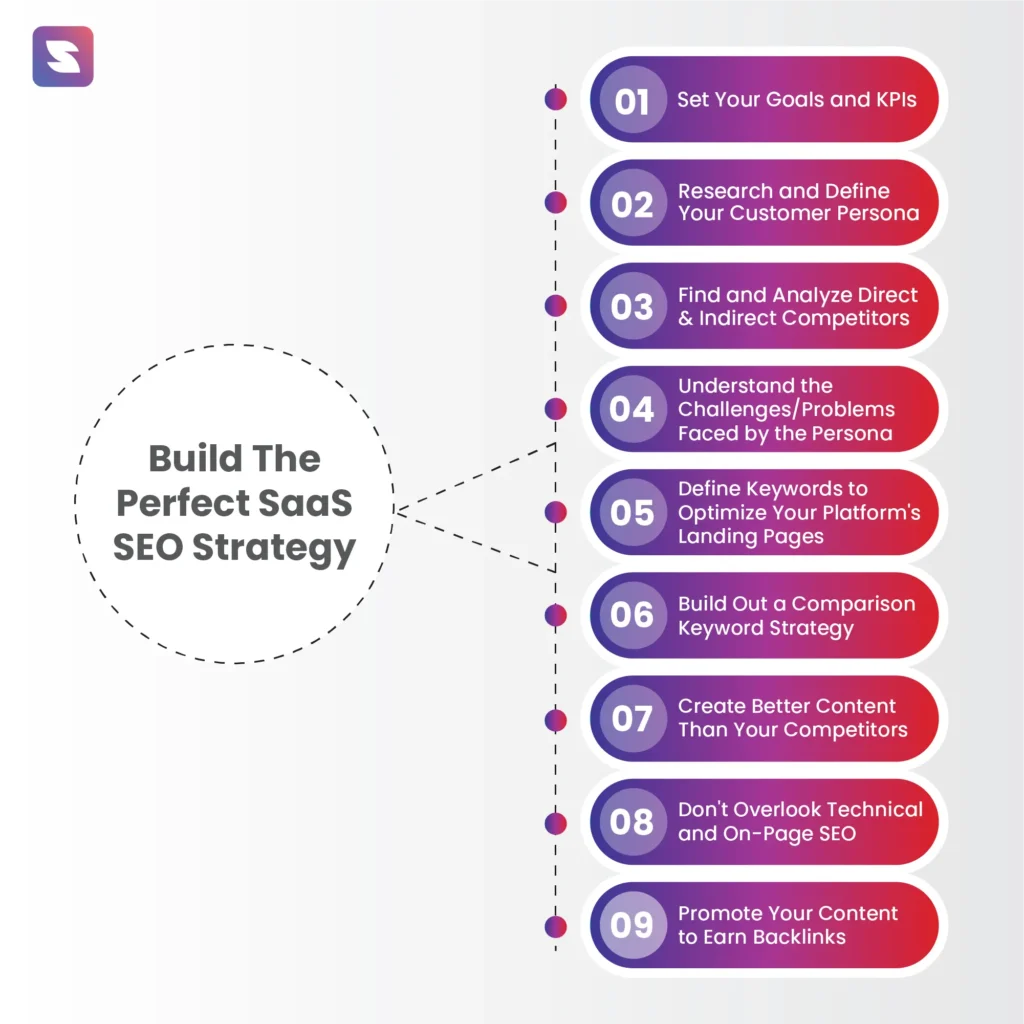
9-Step Process to Build the Perfect SaaS SEO Strategy
1. Set Your Goals and KPIs
Setting your Goals and KPIs is the foundational step in building an effective SEO strategy. Here’s a more detailed look at what it involves:
Setting Goals
The first part of this step is determining what you hope to achieve with your SEO efforts. Here are some examples of SEO goals:
- Improving SERP Ranking: The aim is to get your website to rank higher on search engine results pages for relevant keywords. A higher ranking increases your visibility, leading to more website traffic.
- Increasing Organic Traffic: The focus here is to grow the number of visitors coming to your website through unpaid search results. Organic traffic is often high-quality because it comes from users actively searching for the information or services you provide.
- Generating More Leads: If your objective is lead generation, then you are not just trying to attract more visitors to your site, but you are trying to convert those visitors into leads by encouraging them to provide their contact information.
Remember, your goals should be SMART (Specific, Measurable, Achievable, Relevant, and Time-bound). For instance, instead of setting a goal to “increase organic traffic,” a SMART goal would be to “increase organic traffic by 20% in the next quarter.”
Identifying KPIs
Once you’ve set your goals, you need to determine how you will measure your success. This is where KPIs come in. Here are some common SEO KPIs:
- Organic Search Traffic: This metric tells you how many visitors come to your site through search engines without the help of paid promotions. An increase in organic search traffic typically means your SEO strategy is working.
- Bounce Rate: This refers to the percentage of visitors who leave your site after viewing only one page. A high bounce rate may suggest that your content isn’t engaging enough or that the user’s search intent isn’t matching what your page offers.
- Conversion Rate: This KPI measures the percentage of visitors who complete a desired action. The actions can be anything like signing up for a newsletter or making a purchase. Improving this rate is often a sign of an effective SEO strategy because it means more visitors are engaging with your site in a meaningful way.
By setting clear goals and measuring your progress with KPIs, you’ll have a roadmap for your SEO campaign. Also, you will be able to adjust your strategy as needed to achieve the best results.
2. Define Your Customer Personas
To attract the right traffic, you need to understand who your ideal customers are and what they’re searching for. Your customer personas should include information like demographics, job roles, challenges, and goals.
Here’s an example of a customer persona for a SaaS company that provides survey software:
Persona Name | Mike Hannigan |
| Age | 35 |
| Job Title | Marketing Manager |
| Industry | eCommerce |
| Company Size | Small to Medium-sized Businesses [SMBs] |
| Responsibilities | Managing marketing campaigns, analyzing customer feedback, and improving customer engagement and retention. |
| Goals | Improve response rate on customer feedback surveys, gain insights from customer feedback to inform marketing strategies and increase customer engagement. |
| Challenges | Improve response rate on customer feedback surveys, gain insights from customer feedback to inform marketing strategies, and increase customer engagement. |
| Hobbies | Reading marketing blogs, attending marketing webinars, and doing outdoor activities. |
| Preferred Channels | Email, LinkedIn, and marketing forums. |
This persona helps the SaaS company understand and empathize with Mike’s needs, preferences, and challenges. This, in turn, aids in creating targeted marketing strategies, user-friendly features, and valuable content.
3. Analyze Your Direct and Indirect Competitors
Look at who’s ranking for the keywords you’re targeting. What’s their content like? How many backlinks do they have? By understanding what you’re up against, you can craft an SEO strategy that outperforms your competitors.
Here’s a deeper look into this process and some tips to effectively analyze your competitors:
- Start by listing your known competitors.
- Use SEO tools like SuiteJar, SEMrush, or Ahrefs to analyze their websites. Look at the type of content they produce (blogs, white papers, videos, etc.), its quality, depth, and how frequently they update it.
- Backlinks are crucial for SEO. Use backlink checker tools to discover the quantity and quality of their backlinks. Also, search to see where they are coming from.
- Check out your competitors’ site navigation, mobile compatibility, load speed, and overall design. Why? Because a user-friendly website is essential for SEO. Social signals can indirectly influence SEO.
- Examine their social media strategy, frequency of posts, engagement rate, and follower count.
After this thorough analysis, use your findings to enhance your SaaS SEO strategy.
For example, if a competitor ranks well with certain types of content, consider creating similar (but better) content. If they have backlinks from a particular website, you could target that site with your outreach efforts.
Remember, the goal here isn’t to copy your competitors but to understand their strategies. Always look for opportunities to outperform them.
4. Identify the Problems or Challenges Your Personas Have and Build a Keyword Strategy
Considering the customer persona discussed, we know what the challenge/s are. They are –
- Struggles to create engaging and easy-to-use surveys
- Have difficulty analyzing survey data to extract useful insights
- Finds it challenging to increase survey response rates.
These challenges represent potential search queries your persona might use. This is where keyword research comes into play. By using keyword research tools, you can discover what terms and phrases your persona is likely to search for to address these challenges.
For instance, your persona might search for:
- “How to incentivize survey responses”
- “Easy-to-use survey software”
- “How to analyze survey data”
- “Tips to increase survey response rates”
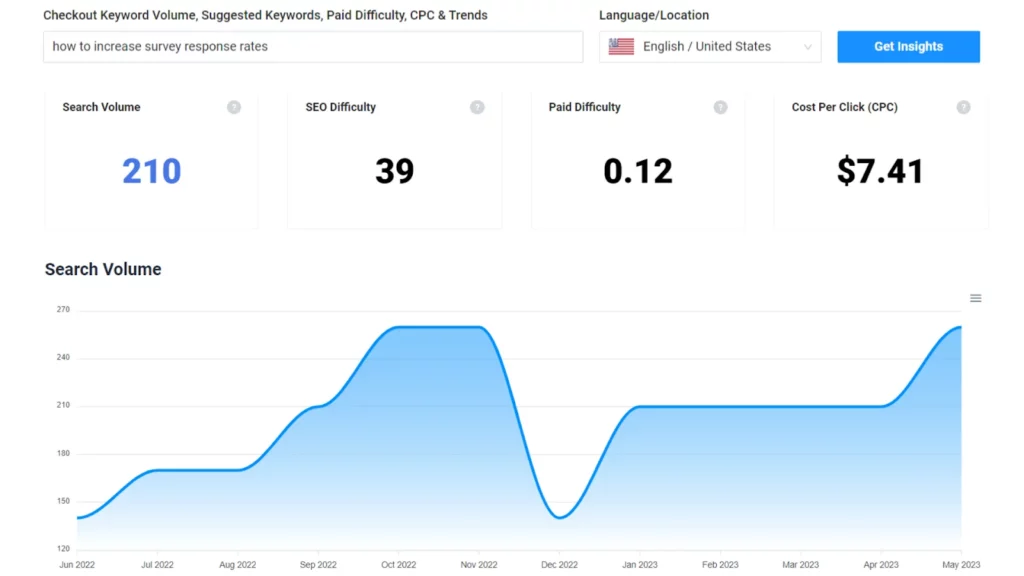
Based on this research, you can build a keyword strategy focusing on these terms. It’s important to consider both short-tail keywords and long-tail keywords.
5. Define Keywords to Optimize Your Platform’s Landing Pages
Once you have identified the keywords. It’s time to implement them. Now there are several ways you can create content. It depends on the keywords you select. Let’s understand this a bit deeper.
If we are considering our example, which is a SaaS company providing survey software, you can do something like the following.
For keywords like “How to incentivize survey responses, ” the ideal content type is a “How-to Guide”. But when considering the following keywords, it’s best to create landing pages.
- NPS software
- Customer Satisfaction Surveys
- Customer Effort Score Surveys
The above-mentioned are essential features of survey software. Therefore, it is necessary to flex the benefits and uniqueness of each in detail. And the best-suited format is a landing page.
Now there is another category – SEO Landing Pages.
These landing pages focus on survey software’s features and explain its USP. The keywords you can use here are something like the following.
- Survey software for employee feedback
- Affordable online survey tools
- Market research software for startups
- Best alternatives to [Competitor]
You can showcase the intuitive UI of the software, provide customer testimonials, or even portray a video showing how easy it is to create a survey with your product.
Following is an example of an SEO landing page, which the company growth.cx used to help a survey software company raise their conversion.
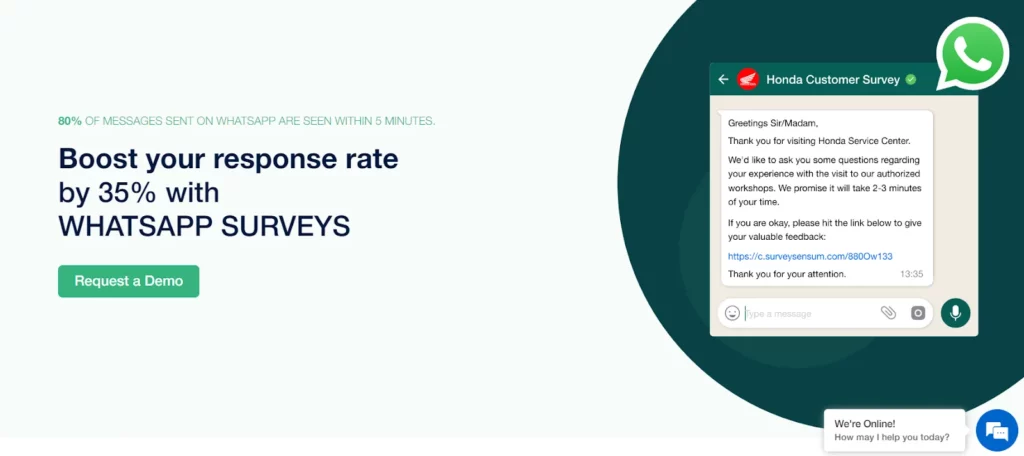
6. Build Out a Comparison Keyword Strategy
It is normal to research and compare multiple products before deciding on one when purchasing online. It’s the same here.
The target audience tends to research all the software available and compare them to see which is the best fit for them. Therefore your keyword strategy should include keywords focusing on comparisons.
Following is an example of a comparison keyword –
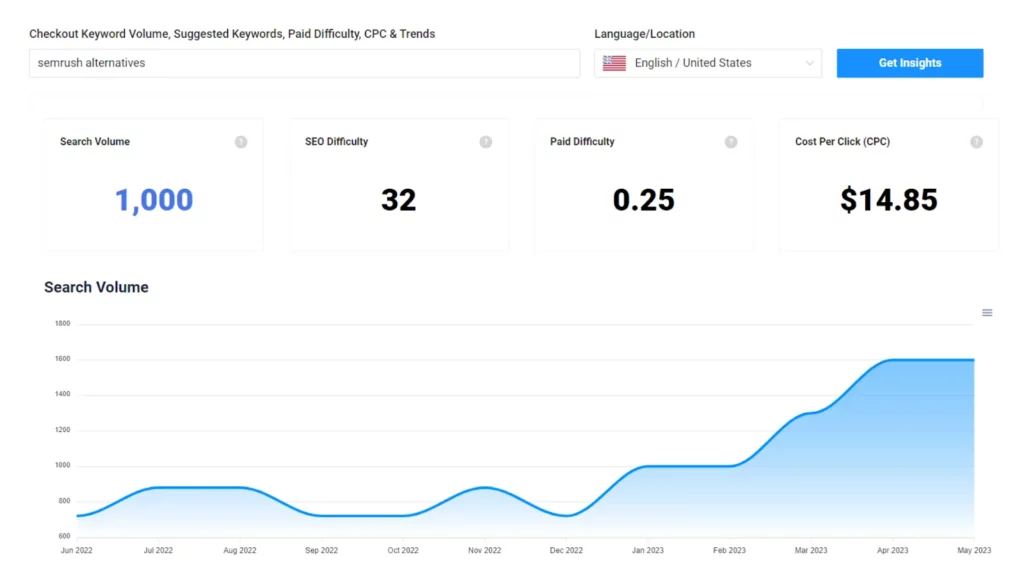
If you have an SEO tool and want to connect with your target audience, this is one keyword you can use. The keyword “semrush alternatives” act as a catalyst to quickly connect with your audience. You can talk about the limitations of the tool and how your software will be an ideal alternative.
Similarly, other such comparison keywords include –
- Ahrefs alternatives
- MOZ competitors
- Ahrefs vs. SEMrush
The list goes. As the niche changes, so do the keywords. If it were for survey software, the comparison keywords would be like “surveymonkey alternatives” or “qualtrics alternatives”.
7. Create Better Content Than Your Competitors
Quality over Quantity
While it is necessary to keep publishing a decent amount of content every month, you shouldn’t compromise on its quality. Your content should talk about the customers’ pain points better and the solutions clearer.
Don’t confine yourself to just blogs and landing pages. Go beyond the obvious, provide helpful guides, create templates if possible, publish ebooks or playbooks, and more.
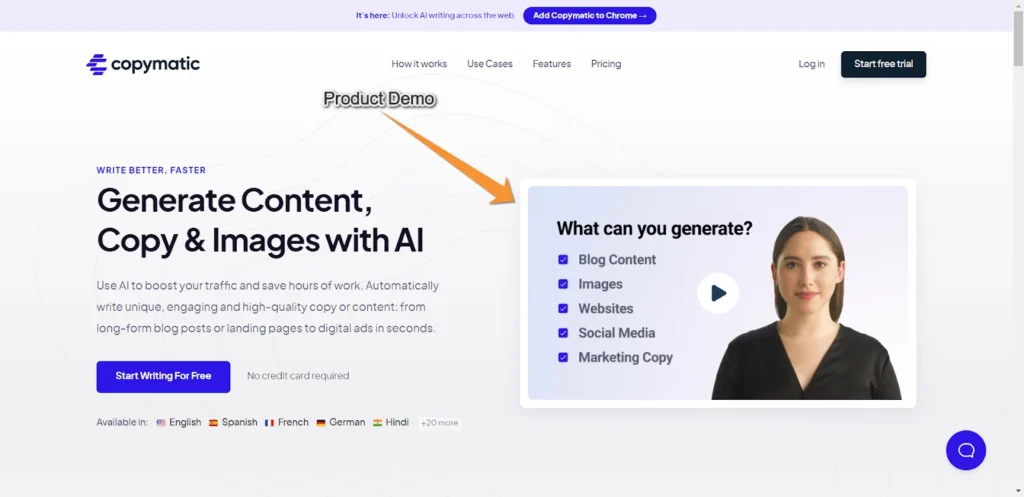
If you can add a video depicting your product’s video, then it’s best. Videos are a growing content piece that can take over the future of content marketing. Through a video, you can clearly show your customers how easy it is to use your product and how it is better than your competitors.
The key here is to keep the content engaging, informative, and tailored to the persona’s needs.
8. Don’t Overlook Technical and On-Page SEO
Suppose we consider a website like a car. The keywords are the fuel that powers it, and the content is like the design. But the technical aspects of SEO are the engine. You need both to win the race to the top of the search results.
Let’s see some technical aspects you should keep in mind while creating a SaaS SEO strategy.
Page Titles & Meta Descriptions
Think of these as your first impression on searchers and search engines. Your page title should be catchy and relevant and include your keyword. And meta description is like a mini-advertisement for your page.
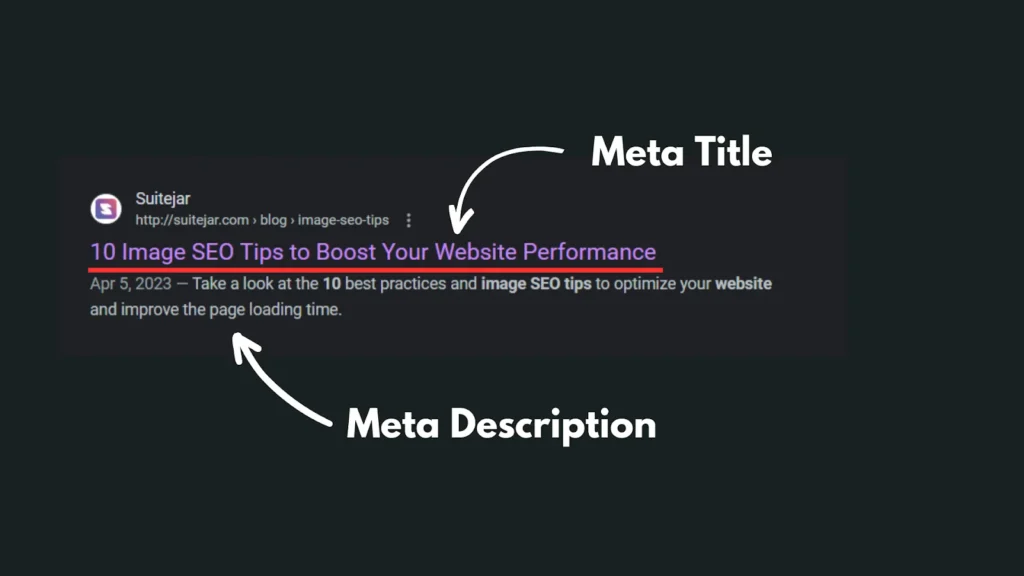
It’s your chance to convince searchers that your page has the answer they’re looking for. Learn more about the importance of using proper meta tags.
URL Structure
Here’s a little secret: search engines love clean, easy-to-read URLs. They should be simple, relevant, and include your keyword. A well-structured URL helps search engines understand what your page is about, and it looks better to potential visitors too.
Here’s an example of how a URL slug should be –

Mobile-Friendly Site
It’s no secret that people are more dependent on their mobile devices. In fact, more and more prefer to search through their mobile devices. Therefore, if your website doesn’t look good or function well on mobile, you’re going to lose a big chunk of potential visitors.
Plus, search engines give priority to mobile-friendly sites in their rankings.
Follow the link to learn how to optimize your website for mobile devices.
Site Speed & Navigation
Nobody likes a slow website. If your site takes too long to load, people will bounce off, and your rankings will suffer. Similarly, your website should be easy to navigate.
A well-structured site improves user experience and helps search engines crawl your site more efficiently.
Want to know how you can know your website’s page speed? Sign in to SuiteJar and conduct a website audit. You will get all the crucial metrics, including loading speed.
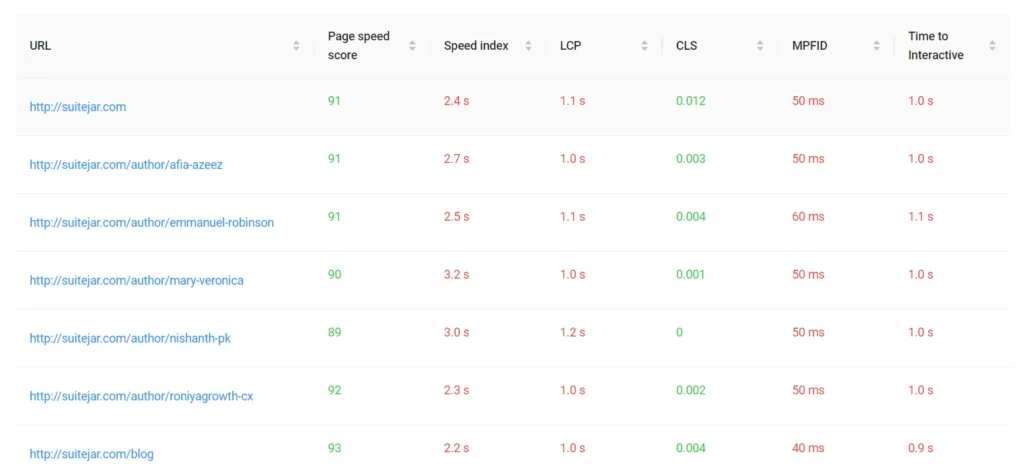
XML Sitemap & Schema Markup
An XML sitemap is like a roadmap of your website that guides search engines to all your important pages. Schema markup, on the other hand, is code that helps search engines understand your content more deeply.
It’s like attaching labels to your content saying, “Hey, Google, this part is a product review,” or “This section is an author bio.” It’s a bit technical, but it’s worth it because it can enhance how your page appears in search results with rich snippets.
Remember, SEO isn’t a one-time thing, it’s an ongoing process of tweaks and improvements, but with time and effort, the rewards can be great. Here is a complete technical SEO checklist for you to improve your website health.
9. Promote Your Content to Earn Backlinks
Finally, it’s time to promote your content. You don’t want to do all the above and leave the rest to fate. NO. Competition is too high to let it happen.
This is where backlinks come into play.
Backlinks act as a vote bank for your content. The more you have, the more your content is likely to rank.
By using backlink checker tools, you can identify where your competitors are getting backlinks from. You can extract the list of websites from the tool and start outreach programs to build your backlinks.
Following are a few ways you can gain backlinks.
- Guest blogging – You can reach out to bloggers and share your interest in working with them. If they are interested in what you have to offer, you can write a blog/article for them and get a link back to your desired webpage.
- Influencer collaboration – Influencers already have a vast follower base. So if you can get to collaborate with anyone in your desired niche, it will be a great win. You can reach out to influencers with a proposal for writing a review of your software. Or you can ask them to share your helpful guide that is conversion optimized.
- Share on Social Media – Understand where [which platform] your target audience is and share your content piece there. You can also consider sharing the content pieces on communities and groups to attract more audiences.
Although backlinks are essential, try to avoid backlinks from websites with higher spam scores and low quality. Getting 5 backlinks from quality websites with good domain authority is far better than 30 backlinks from poor websites.
And while you are on it, focus on getting a “no-follow” link.
Takeaway
While SEO, in general, can feel the same for every industry, it does have its differences. The above-mentioned are 9 must-follow steps for SaaS companies to build a solid SEO strategy.
Now though it doesn’t essentially come under SEO strategy, optimizing or updating old content pieces is also crucial. And in most cases, doing so can improve your keyword ranking and organic visibility.
Yes, I know it’s a gargantuan task to identify the outdated content, let alone the ones that have the potential to rank. But that’s what SuiteJar’s First-Page Ranker is for.
The feature will list out the outdated content that has the potential to rank and provide actionable insights to help you achieve it. You can try out the feature for free and see how it can help. Sign up, Now!

